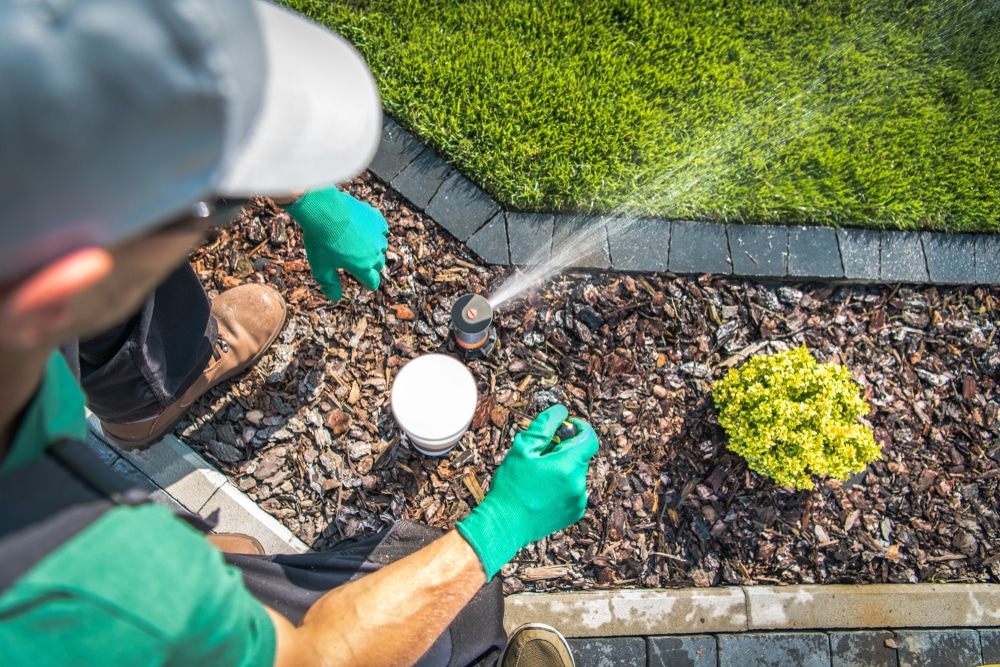Having a perfectly green and healthy lawn takes work. Handwatering has its challenges and the process of designing and installing a reticulation system for your garden can be a daunting task. Luckily, we’re here to help.
If you’re considering introducing an irrigation or reticulation system to keep your garden flourishing as the weather heats up, here are our easy tips, tricks and pointers to tick off your landscaping to-do list before finalising your ideal water system.
1. Before installing reticulation, plan ahead!
It may sound simplistic, but hear us out. Ensuring you have the correct measurements of your garden or yard is essential in planning the design of your future irrigation or reticulation system. When you’re mapping out your space, make sure you include any potential obstacles (like trees or unmovable plants). Don’t forget to include additional information about driveways, locations of taps or permanent fixtures.
2. Determine your ideal water flow with your home’s water flow rate
Your home’s water flow rate is dependent on the amount of water your home can supply. Therefore, it’s essential to assess this rate to understand the number of sprinklers you’ll be able to use at once. In simple terms, water flow rate refers to the number of litres per minute that comes out of your tap.
To get a feel for your home’s water flow, grab a large bucket and time how long it takes for your home’s water supply to fill it. If you require information about your home’s water pressure, your local council can supply these details.
3. Identify your garden’s soil type
As water behaves differently when flowing on different soil types, it’s important to know your garden’s soil type before solidifying irrigation or reticulation plans.
For example, water will soak quickly in sandy soils. Therefore water drippers will need to be placed close together. Adversely, in solid, clay soils, water tends to spread laterally, meaning drippers can be more liberally spaced apart.
4. Purchase the right equipment
Ensuring you have the right equipment for your garden’s irrigation or reticulation system is paramount. Not only will this step save you time and money, but it will help determine the success and longevity of your garden’s watering system.
When choosing the right sprinkler head, keep your garden’s size in mind and opt for one with a rotating head that will reach far enough outwards from its base. Also consider the amount of water pressure available – rotor heads that cover a broader area require over 40 PSI of water pressure, which isn’t available in all homes. Selecting the correct equipment for your house, fundamentally, requires you to fully understand your home’s water capabilities (see point 2 for more information and tips).
5. Only water your plants when needed
Too much moisture can be damaging to plants. Often, overwatering is just as damaging as letting plants dry out!
Make sure you aren’t overwatering your garden and factor in the weather. If there’s a bought of heavy rainfall on the way, you likely won’t need to water your garden until a few days after the rain stops and your plants have absorbed the rain’s moisture.
6. Try to water in the morning
When it does come time to water your garden, try to time it to take place in the morning, when the day’s weather is at its coolest. This will allow the water to reach each plant’s roots without too much water loss due to evaporation and heat. This also means that by the time the afternoon sun hits your garden, your leaves will be dry and therefore less susceptible to plant diseases.
7. Choose the right tools for your garden
Assess the variety and number of plants you’ll need to water in your garden to determine the right tools you’ll need for watering. If you have a small yard with a few pot plants, a watering can should suffice. For lawns with a larger garden bed, you may want to investigate a sprinkler or drip line irrigation system to help automate the watering process. A specific irrigation system will also help you reach the plants’ roots directly, which will aid in absorbing moisture as you water.
8. When handwatering, focus on the roots
When watering your garden, keep your plants’ roots front of mind. The roots require access to water (rather than the leaves). Directly depositing water towards the roots will help each plant absorb the water with ease. If you instead aim your water at the leaves, you run the risk of wasting water and potentially spreading diseases. As we mentioned above, if water or moisture stays on a plant’s leaves, you could run the risk of a toxic plant disease spreading throughout your garden.
Watering the base of the plant avoids wetting the leaves, which can lead to fungal disease.
Need extra advice before making the leap to a reticulation system?
At Looking Good Landscaping, we’re dedicated to creating the perfect solution to local gardening challenges and installing reticulation systems. We have over 24 years of experience within the Perth metropolitan area, specifically in the suburbs of Secret Harbour, Rockingham and Baldivis. We are determined to provide high-quality, friendly service on landscaping projects across the city.





